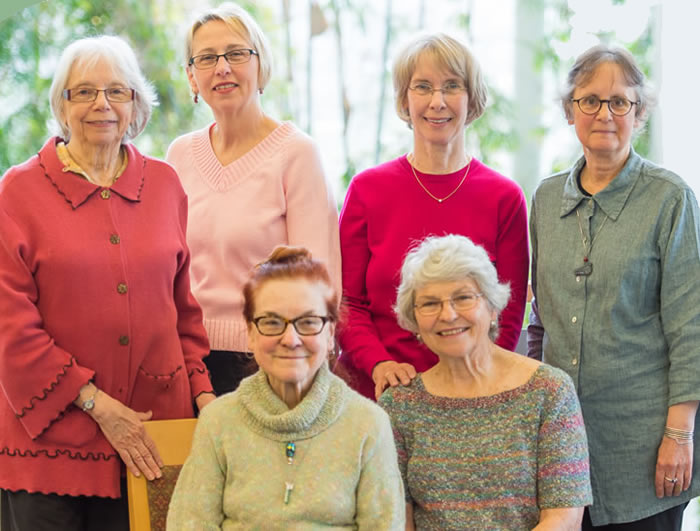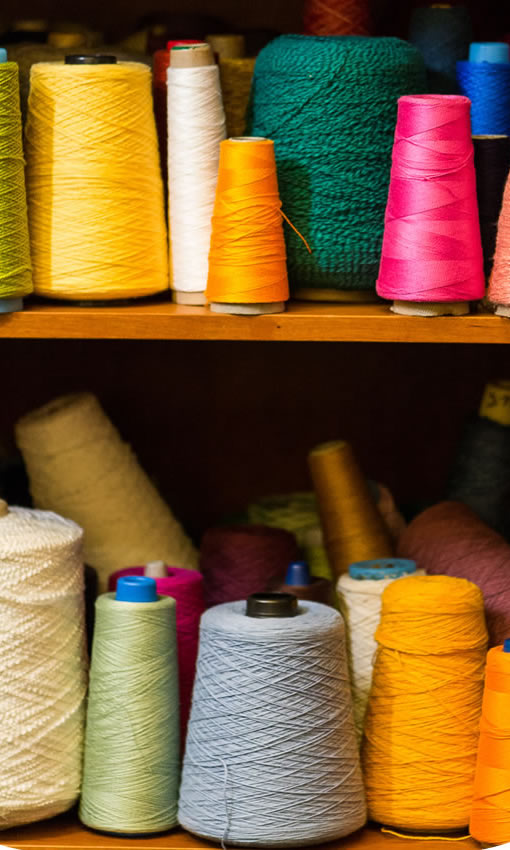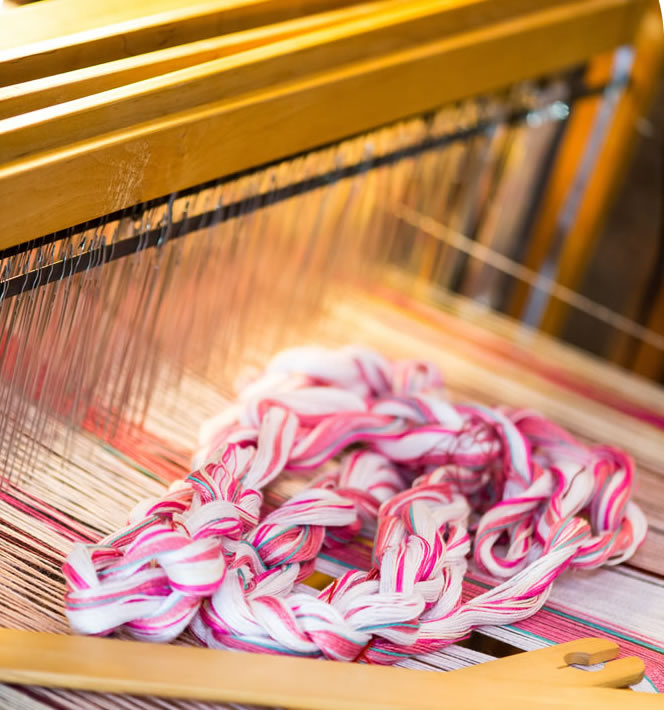Weaving a Better Cancer Care Experience

Photo Credit: Edda Pacifico
For the four volunteer weavers at the U-M Rogel Cancer Center, the first step in the weaving process is choosing yarn and colors. The weaving program has been in the center for over 12 years, offering demonstrations and short lessons on the loom. The cloth is used to create hats, pockets and tear cloths for patients and family members.
Next comes winding out 7 yards worth of thread, 15 threads per inch, 24-inches wide.
"A lot of patients speak of childhood memories of a grandmother or neighbor who wove," says Georgia Gleason, a member of the Ann Arbor Fiberarts Guild and volunteer weaver since the program's inception. "Usually we don't discuss their illness. Weaving on the loom is a distraction and a way to put their minds on something else."

After the yarn is carefully counted and prepared (400 threads on a loom, 7 yards without getting tangled) the weavers make a warp chain.
"I really enjoy sharing the process with patients," says Barb Schutzgruber, another volunteer weaver. "I was the kid my parents lost every place we went where there were demos. I've always liked doing something while talking about it and teaching others."
The chain is attached to the loom and pulled on slowly. This is when patients and families can see the weavers in action on the loom. The number of visitors and participants varies from day to day, with some watching and others wanting to try it themselves.

"Our format is educational," Schutzgruber says. "We’re connecting patients with something most of us don’t think about anymore. We all wear clothing, but no one considers how the cloth is made. Even garments in large clothing chains start on a loom."
The final step at the Rogel Cancer Center is cutting the 7 yards of woven fabric. Historically, tapestries were cut with golden shears in a ceremony. The Rogel Cancer Center weavers use a pair of yellow scissors.
"Once, we cut it off surrounded by a crowd. They applauded. We stretched the cloth across the floor so they could see the different colors," says Gleason.
The cloth is transported to an off-site volunteer seamstress who sews the hats and pockets. They are brought back to the Rogel Cancer Center, where patients can try them on and take one to keep.
Volunteer weavers work the looms in two-hour blocks at the Rogel Cancer Center lobby on Monday through Friday.
Read the Summer, 2015 issue of Thrive.
Learn about Volunteering Opportunities at the U-M Rogel Cancer Center.
